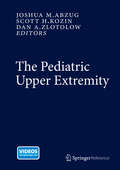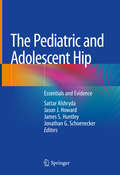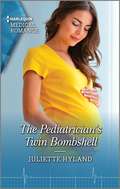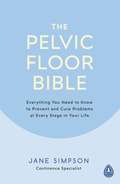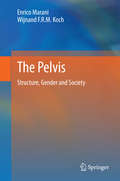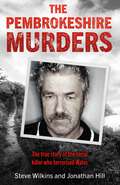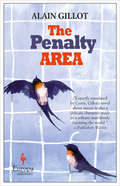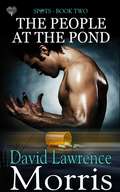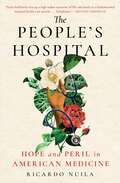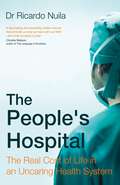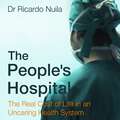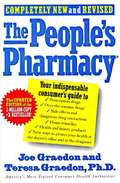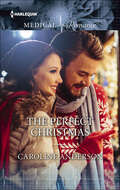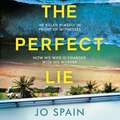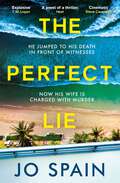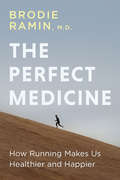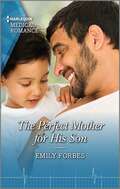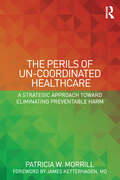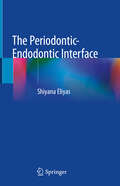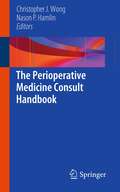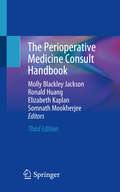- Table View
- List View
The Pediatric Upper Extremity
by Joshua M. Abzug Scott H. Kozin Dan A. ZlotolowSub-specialization within pediatric orthopedics is growing, in part due to the development of free-standing children's hospitals and the desire by patients and their parents to have "experts" care for them. We are at the forefront of a trend in physicians classifying themselves as pediatric upper extremity surgeons. Numerous pediatric hospitals now have or are recruiting physicians to focus their practice in this area. Historically, these issues were treated by general orthopedic surgeons, adult hand surgeons, pediatric orthopedic surgeons, or plastic surgeons. However, none of these professionals treat the entirety of pediatric upper extremity pathology, and no single reference has focused on the treatment of the pediatric upper extremity as a whole. For example, fractures have typically been written about in pediatric textbooks, while tendon and nerve injuries are covered in adult hand textbooks. This textbook is a comprehensive, illustrated reference that discusses all aspects of the pediatric upper extremity, from embryology and functional development to nerve injuries, trauma, tumors, burns, sports injuries and more.
The Pediatric and Adolescent Hip: Essentials and Evidence
by Sattar Alshryda James S. Huntley Jason J. Howard Jonathan G. SchoeneckerThis book provides an evidence-based approach to treating the increasing number of children and adolescents presenting with hip disorders. It integrates the most up-to-date data with essential knowledge, gleaned from decades of previous research and practice. Each chapter provides a comprehensive text which integrates relevant pathophysiology, clinical assessment, and imaging, with an evidence-based approach to non-operative and operative management, authored by globally recognized experts in the field of pediatric hip surgery. Detailed surgical techniques, illustrated with original medical drawings and accompanied by their respective indications, anticipated outcomes, and potential complications, are also featured, in this first orthopedic text dedicated solely to the pediatric and adolescent hip. The Paediatric and Adolescent Hip: Essentials and Evidence will be an indispensable resource for wide spectrum of audience including paediatric orthopaedic surgeons, general practitioners, general orthopaedic surgeons, trauma surgeons, orthopaedic residents, emergency department doctors, and physiotherapists seeking a clear and consistent evidence-based guide to treating the paediatric hip.
The Pediatric and Perinatal Autopsy Manual
by Marta C. Cohen Irene ScheimbergThe Pediatric and Perinatal Autopsy Manual is a clear and practical yet comprehensive guide for pathology trainees and non-pediatric pathologists. With chapters organized by types of autopsy, this manual answers questions such as: what do I do in cases of congenital malformation or suspected metabolic disease? What is important in the diagnosis of intrapartum and neonatal death? What must I consider in a baby with intrauterine growth restriction and stillbirth? How do I perform a post-mortem in a case of sudden death in infancy? Chapters describe the most important conditions to consider when examining the organs, both macroscopically and histologically, as well as descriptions of how to perform the autopsy. The book is richly illustrated throughout with numerous color images. Written and edited by leading experts in the field, this is an essential resource for non-pediatric general and trainee pathologists as well as forensic pathologists.
The Pediatrician's Twin Bombshell
by Juliette HylandThe wrong time……to meet Mr. Right?Why is pediatrician Tessa all work and no play? Well, she&’s far too used to people not believing in her. Still, Tessa can&’t resist one—incredible!—night in nurse Gabe&’s arms…and the chance to feel wanted. But it&’s not just Tessa who is battling her past. Widower Gabe has his own scars to heal. So when Tessa discovers she&’s pregnant, he&’s determined to look after her! But is Tess ready to trust Gabe? &“A delightful second chance on love with intriguing characters, powerful back stories and tantalizing chemistry! Juliette Hyland quickly catches her reader's attention…. I really enjoyed their story! I highly recommend this book…. The story line has a medical setting with a whole lot of feels in the mix!&”-Goodreads on Falling Again for the Single Dad &“Juliette Hyland has a unique voice that comes off the pages and makes it impossible to put this book down. The character development and arc is great and makes the reader want to cheer for both the hero and the heroine.&”-Goodreads on Unlocking the Ex-Army Doc&’s Heart
The Pelvic Floor Bible: Everything You Need to Know to Prevent and Cure Problems at Every Stage in Your Life
by Jane SimpsonHave you ever laughed so much you wet yourself - just a little bit? Or found yourself crossing your legs on the doorstep frantically searching for your keys? Do you get up at night to go to the toilet more than once?An estimated 200 million people around the world suffer from some form of urinary incontinence. It's an embarrassing problem that affects women disproportionately as a result of pregnancy and childbirth. In The Pelvic Floor Bible, Jane Simpson argues that it's time for us all to feel the squeeze and celebrate the wonder of our pelvic floor muscles. She shows you how to incorporate pelvic floor exercises as part of your daily routine in order to prevent issues in later life and cure existing problems now. Learn how to treat common problems such as stress incontinence, overactive bladder and prolapse, get back into shape post-pregnancy and enjoy a healthy sex life at every stage of your life. Incontinence is both preventable and curable through pelvic floor exercises and rehabilitation but too many people assume nothing can be done, follow incorrect advice or are ashamed to seek help. We need to end the taboo now.
The Pelvis
by Enrico Marani Wijnand F.R.M. KochThis book offers a critical review of the pelvic sciences--past, present and future--from an anatomical and physiological perspective and is intended for researchers, medical practitioners and paramedical therapists in the fields of urology, gynecology and obstetrics, proctology, physiotherapy, as well as for patients. The book starts with a "construction plan" of the pelvis and shows its structural consequences. The historical background of pelvic studies proceeds from medieval and early Italian models to the definitive understanding of the pelvic anatomy in the Seventeenth century. During these eras of pelvic research, concepts and approaches developed that are illustrated with examples from comparative anatomy and from mutations, also with regard to the biomechanics of pelvic structures. Perceptions of the pelvis as an important element in sexual arousal and mating conduct are discussed, as well as attitudes to circumcision, castration and other mutilations, in its anthropological, social context. The anatomy and physiology of the pelvic wall and its organs as well as the development of these pelvic organs are covered as a prerequisite to understanding, for example, the spread of pelvic carcinoma and male and female bladder muscle function. Connective pelvic tissue is examined in its reinforcing capacity for pelvic structures, but also as a "hiding place" for infections. Innervations and reflexes relayed through the pelvic nerves are discussed in order to explain incontinence, sphincter function and the control of smooth and striated muscles in the pelvis. Catheters and drugs acting on pelvic function are described, and a critical review of alternative clinical methods for treating pelvic dysfunctions is provided.
The Pembrokeshire Murders: NOW A MAJOR TV DRAMA
by Jonathan Hill Steve WilkinsThe dramatic, compelling bestselling account of how a serial killer was finally unmasked after evading justice for more than twenty yearsNow a major TV series starring Luke Evans1980s. In the beautiful, unspoiled landscape of Pembrokeshire, a serial killer is at large: two double murders; an assault; the rape and assault of two teenagers - all potentially the work of one man.This is the fascinating true story of a brutal murderer and the detectives who worked the cold case for six years in order to bring him to justice. Combining cutting edge forensic techniques with old fashioned detective work, a team of detectives worked to build a case against their prime suspect. But it was a race against time: would he strike again?No one could predict that the killer's appearance on a gameshow would provide bizarre but crucial evidence.The operation is now recognised as one of the greatest cold case reviews ever undertaken in the UK.The killer is now serving a "life means life" sentence.Perfect for fans of The Serpent
The Penalty Area
by Alain GillotThe Penalty Area is a heartwarming novel about overcoming adversity, making human connections, and playing the glorious game of soccer. Vincent once had a shot at becoming a professional soccer player, but a career-ending injury put an end to his dreams. A tough kid from a poor family, he has become an emotionally cut-off man with frustrated hopes and limited options. He finds himself coaching an under-16 soccer club in an attempt to keep alive his only passion in life. The team he coaches is little more than a roster of hotheaded boys, none of whom understands the on-field chemistry needed to win. Simply put, they aren't of a championship caliber. When his unemployed sister Madeleine, a single mother, dumps her thirteen-year-old son on him, Vincent panics. With no clue how to take care of a teenager, he brings his nephew to practice and eventually throws him into the scrimmage. It's then that Vincent notices there's something strange about Léonard. He has a preternatural ability for anticipating each striker's intentions, making him a remarkably talented goalkeeper, but he seems detached, absent, lost. It becomes clear that Léonardhas undiagnosed Asperger's syndrome, and also that, with Léonard's abilities as a goalkeeper, Vincent's ragtag team has a chance to reach the finals. For that to happen, for the team to find a reason to rally behind this strange kid from Paris, Vincent will have to let down his guard and open his heart for the first time ever. A warm and engaging read, The Penalty Area is about building a sense of family on your own terms.
The People at the Pond (Spots Ser. #Vol. 2)
by David L. MorrisOfficer Paul Lee has been on the Waverly Police force his entire career. Now at the point of retirement, he finds he has a life filled with regrets. Having seen the worst that humanity has to offer, he lives in fear and distrust, not liking the man he has become. In the course of a murder investigation, Paul learns of a drug that reverses aging. The possibility of living a new life—the life he wants—looms in front of him. Will he follow the same path as before, or will he free himself from his fears and take a new path? When he meets Marge, a widow at a self-help workshop, Paul knows this is the woman for him. Together they can become the people they were meant to be.
The People's Health: A MEMOIR OF PUBLIC HEALTH AND ITS EVOLUTION AT HARVARD
by Robin Marantz HenigIn The People's Health, author Robin Marantz Henig brings to life the compelling story of the successes and setbacks of public health. This engaging book documents the expansion of public health from a search for microbes to a global effort to secure a healthful environment--from physician John Snow's breakthrough in cholera prevention in mid-nineteenth-century Britain to the public health crisis emerging today from the war in Bosnia.Henig explores the multiple perspectives from which public health must be viewed--well illustrated by the medical, behavioral, and social aspects of AIDS. In telling the stories of the wars on malaria, polio, and other diseases, she describes the machinery of public health and highlights the detective work of the early searches for pathogens.Since mid-century, most disease has related not to epidemics but to personal choices about smoking and eating that can lead to heart disease and cancer. Henig looks at the groundbreaking Framingham Heart Study, running nearly 50 years, from which emerged the concept of risk factors for disease.The People's Health discusses the link between health and human rights--for example, how legal and cultural practices force many African women into unprotected sex with HIV-infected husbands.The subtext of The People's Health is the contribution of the Harvard School of Public Health, direct descendent of the first professional training program for public health in America, where many of the advances of the past half-century originated.Throughout the book, Henig highlights individuals, such as Philip Drinker, who invented the iron lung, and Jonas Salk, who developed the polio vaccine. Also included is the story of Jay Winsten, who, as director of Harvard's Center for Health Communication, imported the designated-driver concept from Sweden and persuaded television's largest production companies to weave it into program plots.A fast-moving overview of humankind's effort to conquer disease and the public health challenges on the horizon, this volume is a "must read" for anyone concerned about public health.
The People's Hospital: Hope and Peril in American Medicine
by M.D. Ricardo NuilaWhere does one go without health insurance, when turned away by hospitals, clinics, and doctors? In The People&’s Hospital, physician Ricardo Nuila&’s stunning debut, we follow the lives of five uninsured Houstonians as their struggle for survival leads them to a hospital where insurance comes second to genuine care. First, we meet Stephen, the restaurant franchise manager who signed up for his company&’s lowest priced plan, only to find himself facing insurmountable costs after a cancer diagnosis. Then Christian—a young college student and retail worker who can&’t seem to get an accurate diagnosis, let alone treatment, for his debilitating knee pain. Geronimo, thirty-six years old, has liver failure, but his meager disability check disqualifies him for Medicaid—and puts a life-saving transplant just out of reach. Roxana, who&’s lived in the community without a visa for more than two decades, suffers from complications related to her cancer treatment. And finally, there&’s Ebonie, a young mother whose high-risk pregnancy endangers her life. Whether due to immigration status, income, or the vagaries of state Medicaid law, all five are denied access to care. For all five, this exclusion could prove life-threatening. Each patient eventually lands at Ben Taub, the county hospital where Dr. Nuila has worked for over a decade. Nuila delves with empathy into the experiences of his patients, braiding their dramas into a singular narrative that contradicts the established idea that the only way to receive good healthcare is with good insurance. As readers follow the movingly rendered twists and turns in each patient&’s story, it&’s impossible to deny that our system is broken—and that Ben Taub&’s innovative model, which emphasizes people over payments, could help light the path forward.
The People's Hospital: The Real Cost of Life in an Uncaring Health System
by Ricardo NuilaHow do medical staff offer care and hope to patients and families when faced with the mayhem and lottery of a broken healthcare system?'A fascinating and beautifully written memoir that reminds us what we have with our NHS - and what we stand to lose' Christie Watson'A tour de force... lyrical and riveting prose' Abraham Verghese, author of Cutting for Stone'Nuila details the horrific reality of the American healthcare system from the front lines, and shows us why it doesn't have to be like that' Sally Hayden, author of My Fourth Time, We DrownedThe People's Hospital is the story of how Ben Taub Hospital strives to provide healthcare to Houston's most vulnerable population, against the background of the chaos of American healthcare. By telling the frequently heartbreaking stories of patients who have had to battle their desperate financial circumstances as well as life-threatening illness - from Rogelio, a twenty-something, undocumented immigrant from Mexico recently diagnosed with kidney disease, to Roxana, a Salvadoran woman who appears in ER after a life-saving surgery resulted in her developing potentially fatal complications - and many more. These are extraordinary stories in which doctors are tied up with complex moral questions about money versus healthcare, and patients manipulate their health conditions in dangerous ways in order to be eligible for life-saving treatment that they cannot afford.
The People's Hospital: The Real Cost of Life in an Uncaring Health System
by Ricardo NuilaHow do medical staff offer care and hope to patients and families when faced with the mayhem and lottery of a broken healthcare system?'A fascinating and beautifully written memoir that reminds us what we have with our NHS - and what we stand to lose' Christie Watson'A tour de force... lyrical and riveting prose' Abraham Verghese, author of Cutting for Stone'Nuila details the horrific reality of the American healthcare system from the front lines, and shows us why it doesn't have to be like that' Sally Hayden, author of My Fourth Time, We DrownedThe People's Hospital is the story of how Ben Taub Hospital strives to provide healthcare to Houston's most vulnerable population, against the background of the chaos of American healthcare. By telling the frequently heartbreaking stories of patients who have had to battle their desperate financial circumstances as well as life-threatening illness - from Rogelio, a twenty-something, undocumented immigrant from Mexico recently diagnosed with kidney disease, to Roxana, a Salvadoran woman who appears in ER after a life-saving surgery resulted in her developing potentially fatal complications - and many more. These are extraordinary stories in which doctors are tied up with complex moral questions about money versus healthcare, and patients manipulate their health conditions in dangerous ways in order to be eligible for life-saving treatment that they cannot afford.
The People's Pharmacy
by Joe Graedon Terry GraedonThe lifesaving, money-saving guide that should be within reach of every medicine cabinet. Join the millions of smart, health-conscious consumers who turn to Joe and Teresa Graedon for sound advice on the enter spectrum of medications and health care products on today's drugstore shelves. From antiperspirants to antidepressants, from dandruff shampoos to cold remedies, antacides, pain relievers, laxatives, betacarotene, and the newest prescription drugs for heart disease, the Graedons provide the latest data on safety and effectiveness, and enable readers to make informed choices. Topics covered include: New warnings about side effects and interactions Breakthroughs that could change your life How, when and with what to take your medications New drugs such as Imitrex, Effexor, Aleve, Pepcid AC, Tagament HB, and Zantac 75: what they do and what to watch out for Home remedies for arthritis, dandruff, hiccups, heartburn, bug bites, bad breath, and more Drugs for children and women (including the latest word on Ritalin estrogen treatment, and contraceptives) Ready-reference guide to the 100 most commonly prescribed drugs How to save money--sometimes hundred of dollars a year--by knowing when a generic is as good as a brand-name drug Allergy, asthma, Alzheimer's anxiety, high blood pressure, diabetes, depression, headache, heartburn, high cholesterol, and other medical conditions
The Perfect Christmas
by Caroline AndersonEmotional trauma...The trauma of their first meeting set the tone of their relationship and established their heated attractioneven before new consulting surgeon David Armstrong reached Audley Memorial Hospital.Nurse Julia Revell felt acutely alive and distinctly nervous with him on staff. Having turned her life around after a difficult marriage, she couldn’t allow herself or her little daughter, Katie, to experience another emotional nightmare. David wanted them both so much and was happy to wait—but Julia’s courage finally ran out.Then came Christmas Eve. Katie was abducted, and Julia realized how much she really needed this man at her side....
The Perfect Lie: The addictive and unmissable heart-pounding thriller
by Jo SpainTHE LATEST PSYCHOLOGICAL THRILLER FROM THE INTERNATIONAL BESTSELLING AUTHOR OF THE CONFESSION"The Perfect Lie will pin you to your seat until you reach the last page" - Jane Casey"Another twisty and intense thriller from the great Jo Spain" - Adrian McKinty********He jumped to his death in front of witnesses. Now his wife is charged with murder.Five years ago, Erin Kennedy moved to New York following a family tragedy. She now lives happily with her detective husband in the scenic seaside town of Newport, Long Island. When Erin answers the door to Danny's police colleagues one morning, it's the start of an ordinary day. But behind her, Danny walks to the window of their fourth-floor apartment and jumps to his death.Eighteen months later, Erin is in court, charged with her husband's murder. Over that year and a half, Erin has learned things about Danny she could never have imagined. She thought he was perfect. She thought their life was perfect.But it was all built on the perfect lie.********Discover DI Tom Reynolds in the first instalment of Jo Spain's acclaimed detective series, With Our Blessing.For even more Jo Spain, check out her exciting and gripping thriller yet, Six Wicked Reasons.(P)2021 Quercus Editions Limited
The Perfect Lie: The addictive and unmissable heart-pounding thriller
by Jo Spain'Superbly written, cinematic and pacey' Steve Cavanagh'Will keep you guessing and guessing' Cara Hunter'Another twisty and intense thriller from the great Jo Spain' Adrian McKinty********He jumped to his death in front of witnesses. Now his wife is charged with murder.Five years ago, Erin Kennedy moved to New York following a family tragedy. She now lives happily with her detective husband in the scenic seaside town of Newport, Long Island. When Erin answers the door to Danny's police colleagues one morning, it's the start of an ordinary day. But behind her, Danny walks to the window of their fourth-floor apartment and jumps to his death.Eighteen months later, Erin is in court, charged with her husband's murder. Over that year and a half, Erin has learned things about Danny she could never have imagined. She thought he was perfect. She thought their life was perfect.But it was all built on the perfect lie.********'A jewel of a thriller' Heat'This will have you absolutely gripped' Prima
The Perfect Lie: the gripping new thriller from the bestselling author of Dirty Little Secrets
by Jo Spain'A fabulous page-turner that will keep you guessing and guessing' CARA HUNTER'Intense, clever writing and packed with twists and turns' DERVLA MCTIERNAN'Another twisty and intense thriller from the great Jo Spain' ADRIAN MCKINTYHe jumped to his death in front of witnesses. Now his wife is charged with murder.Five years ago, Erin Kennedy moved to New York following a family tragedy. She now lives happily with her detective husband in the scenic seaside town of Newport, Long Island. When Erin answers the door to Danny's police colleagues one morning, it's the start of an ordinary day. But behind her, Danny walks to the window of their fourth-floor apartment and jumps to his death.Eighteen months later, Erin is in court, charged with her husband's murder. Over that year and a half, Erin has learned things about Danny she could never have imagined. She thought he was perfect. She thought their life was perfect.But it was all built on the perfect lie.'Superbly written, cinematic and pacy!' STEVE CAVANAGH'Domestic noir at its best' M. T. EDVARDSSON'Grabs you by the throat' LIZ NUGENT'A top-notch thriller' T. M. LOGAN'Chilling and all too plausible' JAMES OSWALD'I loved this book and it deserves to fly to the top of the charts' ELLY GRIFFITHS'A sure-fire smash hit!' CAZ FREAR'The Perfect Lie will pin you to your seat until you reach the last page' JANE CASEY'So good you won't want it to end' DAILY MAIL'A jewel of a thriller' HEAT'With so many "oh my gosh" moments, this will have you absolutely gripped' PRIMA'Be warned: this book will keep you up all night!' CLOSER
The Perfect Medicine: How Running Makes Us Healthier and Happier
by Brodie RaminImagine a medicine that could make you live longer, healthier, happier, and stronger. What if that medicine was already right at your feet? Running is the miracle drug that can do all this and more — it is the perfect medicine.Throughout his career, Dr. Brodie Ramin has seen cases of diabetes, hypertension, and anxiety, which he has traced back to inactivity. Now more than ever, people are looking for inspiration and motivation to get fit, change their lives, and improve their overall wellness. In The Perfect Medicine, Dr. Ramin shares with us his discovery that we already have the perfect medicine to treat and prevent these common illnesses and improve our health: running. However, too few people are taking the right dose or using it at all.The Perfect Medicine explores the science of running and exercise and provides advice on how to maximize its benefits and be your best self. After rediscovering the joy of running in his early thirties, Dr. Ramin became fascinated by the activity. This book takes the reader on a personal journey of discovery, traces the evolution of running, shares strategies to get fit and run faster, and shows how exercise can even help people recover from addiction and mental health conditions.
The Perfect Mother for His Son
by Emily ForbesA doctor and his son……could she be the nurse to complete this family?Pediatric nurse Daisy has never reacted to anyone the way she does to new doctor Ajay. She&’s stunned by their outrageous chemistry—and the way he instinctively understands her on a level she&’s never experienced before. It has perfectionist Daisy throwing her usual checklist straight out the window! Are this single dad and his adorable son the ready-made family she&’s never allowed herself to want? Bondi Beach Medics quartetBook 1 – Rescuing the Paramedic&’s HeartBook 2 – A Gift to Change His LifeBook 3 – The Perfect Mother for His SonLook out for the next bookComing soon &“…touching and full of intense chemistry. And intense emotions, actually. Reunited by Their Secret Daughter was a feel-good romance where the characters were destined to be together, their circumstances were extremely interesting, and which had a HEA magical enough for a fairy tale.&”-Harlequin Junkie&“Overall, Ms. Forbes has delivered a delightful read in this book where emotions run high because of everything this couple go through on their journey to happy ever after…and where the chemistry between this couple was strong; the romance was delightful and had me loving these two together….&”-Harlequin Junkie on Rescued by the Single Dad
The Perfect Sleeve Gastrectomy: A Clinical Guide to Evaluation, Treatment, and Techniques
by Mariano Palermo Michel Gagner Almino Ramos Cardoso Patrick Noel David NoccaSleeve gastrectomy (SG) is the most common bariatric procedure performed worldwide, more than 55% of bariatric procedures are sleeve gastrectomies. This title will be comprehensive and detail all the approaches used in performing sleeve gastrectomy, offering readers all the tools needed to perform the perfect SG. Obesity has become a major global problem that continues to spread in both developed and developing countries. It costs more than any other health problem due to its prevalence and its many costly complications such diabetes and heart disease as well as in disability and loss of productivity. While prevention of obesity is the best approach for the future, the current problem lies with managing those who are already obese or morbidly obese who constitute close to two thirds of the population in many countries such as the US. Diet, exercise, and behavioral change are the mainstays for any meaningful attempt for significant and durable weight loss. Unfortunately, for those who are morbidly obese, these measures alone almost consistently fail to achieve acceptable weight loss in the long term. Today, bariatric surgery is the only evidence-based treatment for morbid obesity with a low complication rate and acceptable results in the long-term for both weight loss and resolution of comorbidities. Despite the data, the acceptance of these operations was limited due to fear of what was perceived as major surgery. Today, applying minimally invasive technology to these complex operations made them more acceptable to patients due to decreased pain, faster recovery and fewer overall complications. This, in addition to improved outcomes as we went further along the learning curve, has made these operations more common and helped growing the field to be an independent specialty for surgeons and perhaps a new specialty for gastroenterologist. In these exciting times, the 5 international editors (one of them, Michel Gagner, is the creator of the SG) wanted to capture the global standards of practice at a time of change, excitement, and lots of controversy, regarding this common procedure. We an aim to shed light on best practices across the borders, the intention of this volume is to develop a reliable reference to guide the practicing physician anywhere in the world, and from whatever specialty (surgeon, gastroenterologist or endoscopist) to navigate through the many current options of therapy in this rapidly changing field. We also aim to provide high quality illustrations and high-definition videos of these techniques to go with the didactic chapters written by thought leaders. In this book we will focus first on the clinical problems of the patients and the indications for the sleeve. Regarding the technical aspects, we will describe the technique step-by-step (including videos) and also we will detail the staplers, its size and different colors -- and the different sizes of the bougies, and also special description of the reinforcement of the sutures after the sleeve. We know that mainly the SG has a restrictive function, but we will also describe the metabolic effects of this surgery. Then we will describe the nontraditional SG techniques, such as the endoscopic approach, staples sleeve and robotic technologies. Bariatric surgery has very few rates of complications, but when complications happen, they are severe. Thus we will describe how to identify them immediately and also the different approaches to treat them by endoscopy, laparoscopy and percutaneous image guided surgery. A chapter will also cover revisional surgery and the different revisional procedures, not only from sleeve to other procedures but also from other procedures to SG. For the last section,we will include the lessons learned from almost 20 years now since the SG was first described, providing an overview on how we imagine the future will be for the most common bariatric procedure performed worldwide. This titl
The Perils of Un-Coordinated Healthcare: A Strategic Approach toward Eliminating Preventable Harm
by Patricia W MorrillDespite its frequency and its potential severity, preventable medical harm is still prominent in American hospitals and continues to put an alarming amount of lives at risk, being the third leading cause of death in the United States. Even some of the most commonly performed surgeries, such as knee and hip replacements, are resulting in a rapidly increasing rate of surgical site infections. Patricia Morrill’s book is specifically written for the healthcare industry. It fills the need for exposing how preventable harm is a systemwide problem and provides a step-by-step model to apply for raising process improvement to a strategic level. The approach is ideal for team training purposes. The Perils of Un-Coordinated Healthcare gives the reader both a personal and professional view of the impact of preventable medical harm, using case studies and observations on preventable deaths and healthcare practice alongside recommended research topics and resources. By looking at the work of both healthcare workers and their managing executives, this instructional text gives methods to assess workforces and self-assess the performances of managers. The book equips readers with a 360 view: patients, families, physicians, workforce, leaders and culture. Morrill’s ten-step model of Process Improvement Strategy Deployment integrates Lean and Project Management methodologies for developing a problem-solving culture and initiating process improvement at a strategic level. It is essential reading for those in the healthcare industry.
The Periodontic-Endodontic Interface
by Shiyana EliyasText This book equips dental care providers with a thorough understanding of the Periodontic-Endodontic Interface. It discusses embryonic development of the tooth, oral health and pathology, as well as the diagnosis and management of periodontal disease and endodontic disease, occurring both separately and together. Evidence-based information is given on Periodontal and Endodontic pathogens, lesions and infections with various forms of manifestation. The clear and easy-to-read text is complemented by numerous high-quality photographs and tables that assist understanding and helps with the identification of management solutions. The book is valuable resource for all dental practitioners with an interest in endodontics, periodontics, restorative dentistry, and for higher-level students. USPs Discusses periodontal and endodontic disease, occurring both separately and together Includes clinical cases to illustrate practical tips Gives evidence-based information on lesions, infections and oral health SEO MetaData This book equips dental care providers with a thorough understanding of the Periodontic-Endodontic Interface
The Perioperative Medicine Consult Handbook
by Christopher J. Wong Nason P. HamlinPatients with a wide range of medical conditions undergo surgeries of varying levels of risk, and the evolving field of consult medicine aims to address the needs of these patients whether pre- or post-surgery. Creating a differential diagnosis, weighing risks and benefits, providing timely treatment--these skills are equally applicable to the internist whether he or she is in an office or in a perioperative setting. The Perioperative Medicine Consult Handbook provides useful information, advice and guidelines based on a combination of clinical experience and evidence-based medicine. It covers topics in many major clinical areas (anesthesiology, cardiology, pulmonology, gastroenterology, rheumatology, endocrinology, and many others ) and puts critical surgery information at a consult physician's fingertips. This book was originally created by the Medicine Consult Service team at the University of Washington Medical Center and has already gained traction as a handy resource in the field. Now fully updated and expanded with new topics (including substance abuse and obesity), this quick reference is sure to be indispensible for residents and consult physicians alike.
The Perioperative Medicine Consult Handbook
by Molly Blackley Jackson Somnath Mookherjee Ronald Huang Elizabeth KaplanThis comprehensive third edition provides robust support to clinicians providing perioperative care for patients. Patients with a range of medical conditions undergo surgeries of varying levels of risk, and the evolving field of consult medicine aims to address their needs, whether pre- or post-surgery. This book offers evidence and experience-based information, advice, and guidelines on all aspects of perioperative medicine. Care around surgeries in many major clinical areas are included, including cardiology, pulmonology, gastroenterology, rheumatology, endocrinology, and so on. This new edition has been updated throughout with the latest literature, more visual content (tables and algorithms), and eleven new chapters on topics such as: chronic pain, congestive heart failure, hormone therapy and transgender patients, and postoperative hypoxemia. This new edition focuses on high value care in order to improve outcomes, including minimizing complications and readmissions. It also provides streamlined key points for caring for patients with medical diagnoses that may be especially complicated around surgery. This resource is invaluable for practicing physicians (including medical consultants, surgeons, and anesthesiologists) and other professionals who aim to optimize care of surgical patients.
